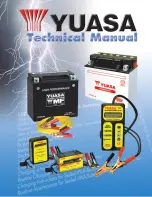
viii
MTP700 Portable Radio / Detailed Service Manual
SAFETY
Operational Warnings
Operational Cautions
Intrinsically Safe Radio Information
FMRC Approved Equipment
Anyone intending to use a radio in a location where hazardous concentrations of flammable
materials exist (hazardous atmosphere) is advised to become familiar with the subject of intrinsic
safety and with the National Electric Code NFPA 70 (National Fire Protection Association) Article
500 (hazardous [classified] locations).
An Approval Guide, issued by Factory Mutual Research Corporation (FMRC), lists manufacturers
and the products approved by FMRC for use in such locations. FMRC has also issued a voluntary
approval standard for repair service (“Class Number 3605”).
FMRC Approval labels are attached to the radio to identify the unit as being FMRC
Approved for specified hazardous atmospheres. This label specifies the hazardous
Class/Division/Group along with the part number of the battery that must be used.
Depending on the design of the portable unit, this FM label can be found on the back
or the bottom of the radio housing. The FM Approval Mark is shown here.
For Vehicles With An Air Bag
Do not place a portable radio in the area over an air bag or in the air bag deployment area.
Air bags inflate with great force. If a portable radio is placed in the air bag deployment area
and the air bag inflates, the radio may be propelled with great force and cause serious injury
to occupants of the vehicle.
Potentially Explosive Atmospheres
Turn off your radio prior to entering any area with a potentially explosive atmosphere, unless
it is a portable radio type especially qualified for use in such areas as “Intrinsically Safe” (for
example, Factory Mutual, CSA, UL, or CENELEC). Do not remove, install, or charge batteries
in such areas. Sparks in a potentially explosive atmosphere can cause an explosion or fire
resulting in bodily injury or even death.
The areas with potentially explosive atmospheres referred to above include fueling areas
such as below decks on boats, fuel or chemical transfer or storage facilities, and areas
where the air contains chemicals or particles such as grain, dust or metal powders. Areas
with potentially explosive atmospheres are often but not always, posted.
Blasting Caps And Blasting Areas
To avoid possible interference with blasting operations, turn off your radio when you are
near electrical blasting caps, in a blasting area, or in areas posted: “Turn off two-way radio.”
Obey all signs and instructions.
Antennas
Do not use any portable radio that has a damaged antenna. If a damaged antenna comes into contact
with your skin, a minor burn can result.
Batteries
All batteries can cause property damage and/or bodily injury such as burns if a conductive material
such as jewelry, keys, or beaded chains touch exposed terminals. The conductive material may
complete an electrical circuit (short circuit) and become quite hot. Exercise care in handling any
charged battery, particularly when placing it inside a pocket, purse, or other container with metal
objects.
FM
APPROVED
Summary of Contents for IMPRES Tetra MTP700
Page 16: ...xvi MTP700 Portable Radio Detailed Service Manual THIS PAGE INTENTIONALLY LEFT BLANK ...
Page 32: ...3 2 MTP700 Portable Radio Detailed Service Manual THIS PAGE INTENTIONALLY LEFT BLANK ...
Page 34: ...4 2 MTP700 Portable Radio Detailed Service Manual THIS PAGE INTENTIONALLY LEFT BLANK ...
Page 122: ...4 1 88 MTP700 Portable Radio Detailed Service Manual THIS PAGE INTENTIONALLY LEFT BLANK ...
Page 154: ...4 2 32 MTP700 Portable Radio Detailed Service Manual THIS PAGE INTENTIONALLY LEFT BLANK ...
Page 206: ...4 2 84 MTP700 Portable Radio Detailed Service Manual THIS PAGE INTENTIONALLY LEFT BLANK ...
Page 226: ...6 14 MTP700 Portable Radio Detailed Service Manual THIS PAGE INTENTIONALLY LEFT BLANK ...
Page 242: ...A 4 MTP700 Portable Radio Detailed Service Manual THIS PAGE INTENTIONALLY LEFT BLANK ...
Page 248: ...C 2 MTP700 Portable Radio Detailed Service Manual THIS PAGE INTENTIONALLY LEFT BLANK ...









































